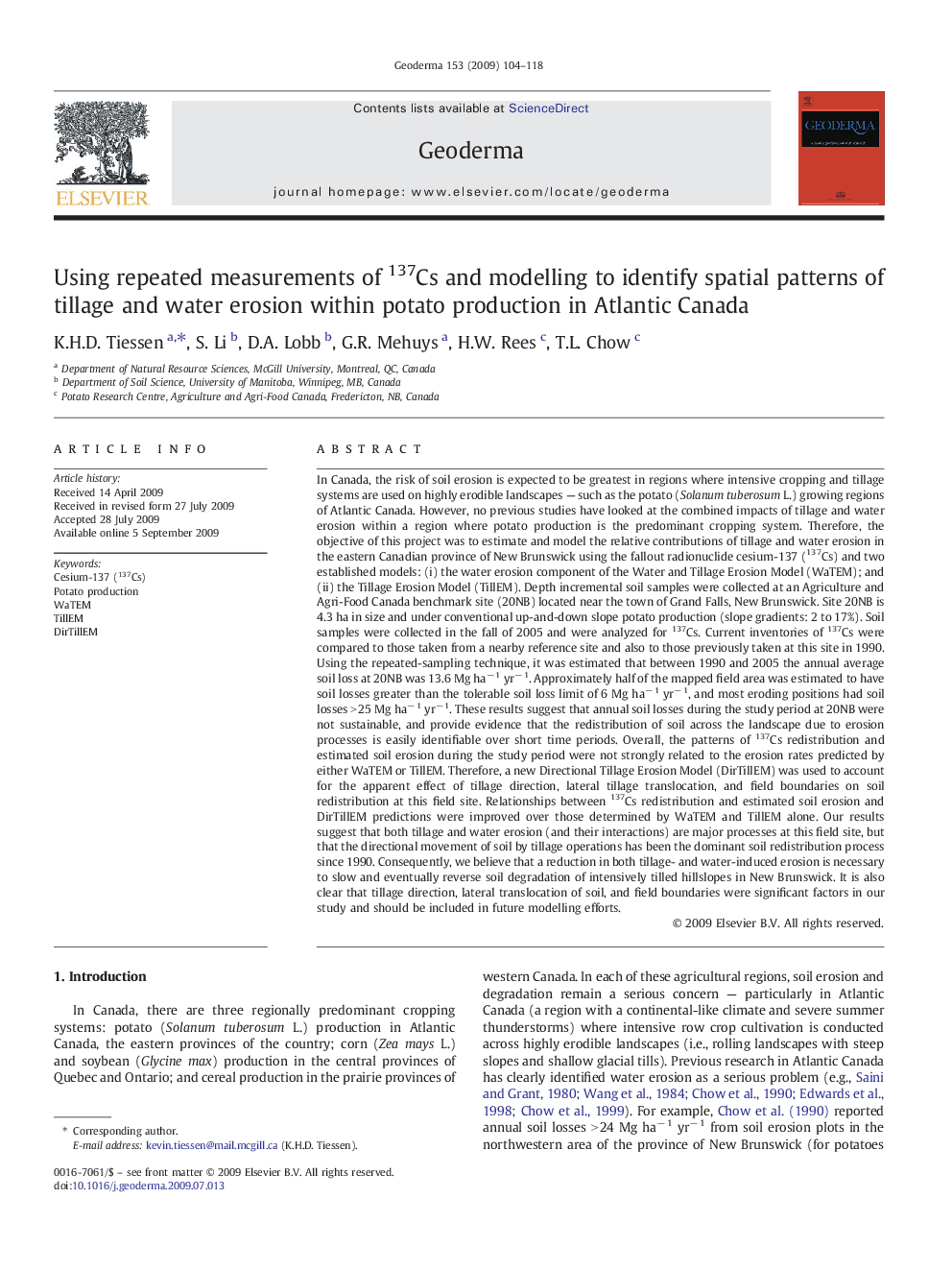| کد مقاله | کد نشریه | سال انتشار | مقاله انگلیسی | نسخه تمام متن |
|---|---|---|---|---|
| 4574295 | 1629528 | 2009 | 15 صفحه PDF | دانلود رایگان |

In Canada, the risk of soil erosion is expected to be greatest in regions where intensive cropping and tillage systems are used on highly erodible landscapes — such as the potato (Solanum tuberosum L.) growing regions of Atlantic Canada. However, no previous studies have looked at the combined impacts of tillage and water erosion within a region where potato production is the predominant cropping system. Therefore, the objective of this project was to estimate and model the relative contributions of tillage and water erosion in the eastern Canadian province of New Brunswick using the fallout radionuclide cesium-137 (137Cs) and two established models: (i) the water erosion component of the Water and Tillage Erosion Model (WaTEM); and (ii) the Tillage Erosion Model (TillEM). Depth incremental soil samples were collected at an Agriculture and Agri-Food Canada benchmark site (20NB) located near the town of Grand Falls, New Brunswick. Site 20NB is 4.3 ha in size and under conventional up-and-down slope potato production (slope gradients: 2 to 17%). Soil samples were collected in the fall of 2005 and were analyzed for 137Cs. Current inventories of 137Cs were compared to those taken from a nearby reference site and also to those previously taken at this site in 1990.Using the repeated-sampling technique, it was estimated that between 1990 and 2005 the annual average soil loss at 20NB was 13.6 Mg ha− 1 yr− 1. Approximately half of the mapped field area was estimated to have soil losses greater than the tolerable soil loss limit of 6 Mg ha− 1 yr− 1, and most eroding positions had soil losses > 25 Mg ha− 1 yr− 1. These results suggest that annual soil losses during the study period at 20NB were not sustainable, and provide evidence that the redistribution of soil across the landscape due to erosion processes is easily identifiable over short time periods. Overall, the patterns of 137Cs redistribution and estimated soil erosion during the study period were not strongly related to the erosion rates predicted by either WaTEM or TillEM. Therefore, a new Directional Tillage Erosion Model (DirTillEM) was used to account for the apparent effect of tillage direction, lateral tillage translocation, and field boundaries on soil redistribution at this field site. Relationships between 137Cs redistribution and estimated soil erosion and DirTillEM predictions were improved over those determined by WaTEM and TillEM alone. Our results suggest that both tillage and water erosion (and their interactions) are major processes at this field site, but that the directional movement of soil by tillage operations has been the dominant soil redistribution process since 1990. Consequently, we believe that a reduction in both tillage- and water-induced erosion is necessary to slow and eventually reverse soil degradation of intensively tilled hillslopes in New Brunswick. It is also clear that tillage direction, lateral translocation of soil, and field boundaries were significant factors in our study and should be included in future modelling efforts.
Journal: Geoderma - Volume 153, Issues 1–2, 15 October 2009, Pages 104–118